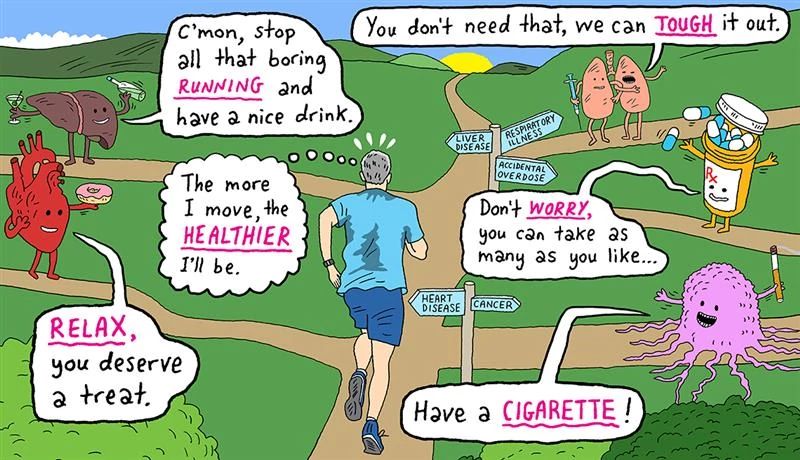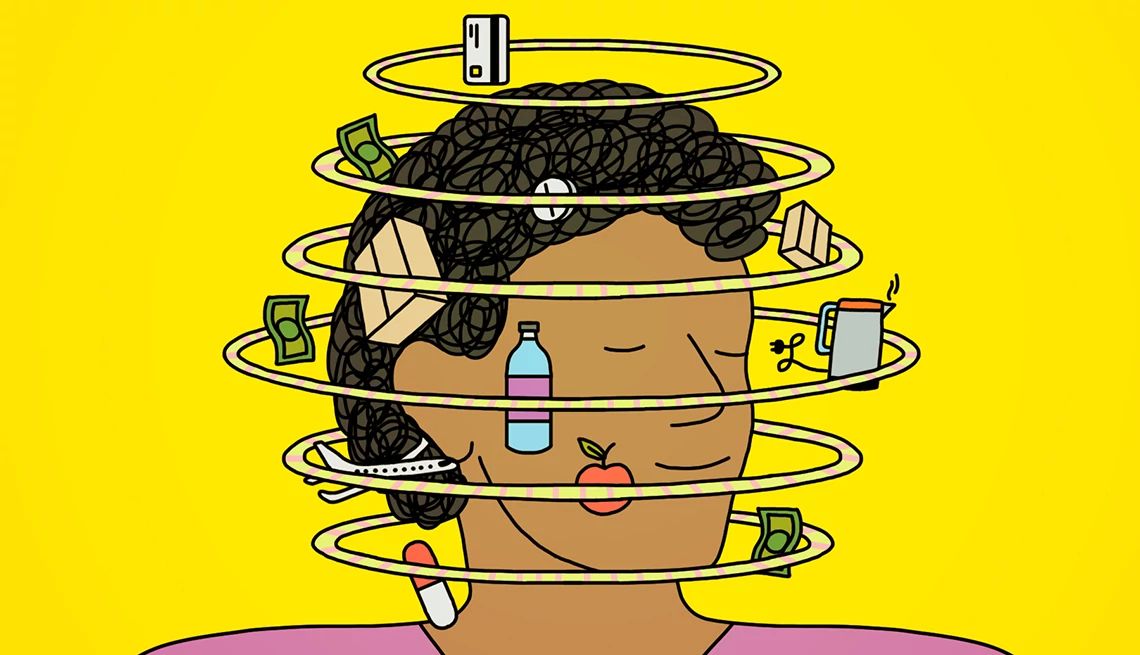AARP Hearing Center


“Are you happy?” Many of us hear some version of this question or phrase numerous times a day. There is an expectation in America that we should all be walking around feeling happy every minute of the day. It’s even written into the Declaration of Independence: We are granted unalienable rights to “life, liberty and the pursuit of happiness.”
But if you look at the numbers — according to an AARP mental health survey more than 60 percent of caregivers say that providing care for a loved one increases their levels of stress and anxiety — maintaining that cheery disposition is not always easy. No wonder many of us, especially caregivers, often feel as if we are falling short.


AARP Membership— $12 for your first year when you sign up for Automatic Renewal
Get instant access to members-only products and hundreds of discounts, a free second membership, and a subscription to AARP the Magazine. Find out how much you could save in a year with a membership. Learn more.
But what if someone told you that we were all searching for the wrong thing? What if a continual state of happiness is not attainable?
Jennifer Guttman, M.D., a therapist and the author of the book, Beyond Happiness: The Six Secrets of Lifetime Satisfaction, contends that our continued focus on sustaining happiness can actually create a feeling of inadequacy.
“Happiness is an emotion,” explains Guttman. “It’s a feeling you get when you see a sunrise, receive a positive text or hold your new grandchild. The fact is, you can’t sustain an emotion; it’s more of a short-term dopamine hit. Feeling satisfied throughout the day or the feeling of satisfaction at the end of the day is a much more achievable and healthier goal.”
You can’t fail at an emotion
For those of us who spend time caring for others and often are unable to regularly prioritize our own emotions or desires first, this should come as a bit of a relief. Guttman’s book grew out of her personal experience as well as her practice as a therapist. “Thousands of clients have come to my office over the past 30 years, telling me they feel like they’re failing at being happy,” says Guttman. “And I tell them they can’t fail at an emotion.”
Guttman views happiness as being dependent upon factors in the outside world. “When we tell ourselves that positive feedback from the doctor, hitting a health milestone or a new relationship with a fellow caregiver will make us happy, we’re often setting ourselves up for disappointment. If we are hoping these kinds of things will bring happiness in an ongoing and sustainable way, we’re destined to be let down,” she says. “Like all emotions, happiness comes and goes. Yes, it feels great, but then it passes.”



































































More From AARP
Feeling Angry as a Family Caregiver? You Are Not Alone
How to acknowledge and deal with challenging emotionsHow to Set Boundaries as a Family Caregiver
Sometimes saying ‘no’ is the only answerAARP Smart Guide to Keeping Your Memory Sharp
22 science-backed ways to growing a healthier, happier brain, now and in the future